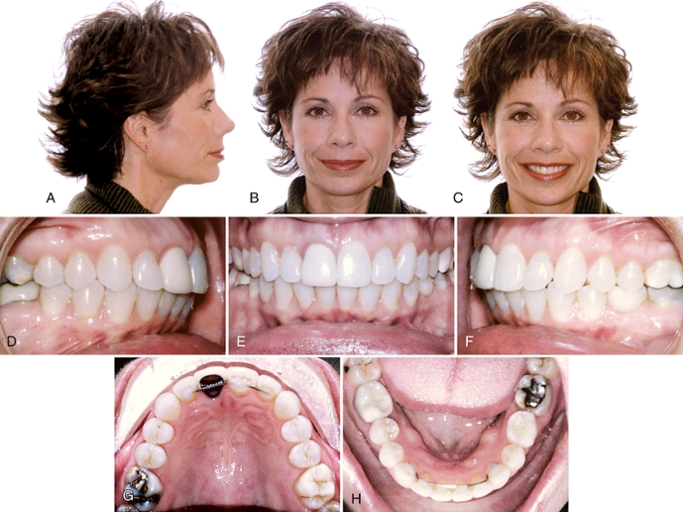It is hard to write about orthodontics when you live in an Orwellian reality. Orthodontic issues look small and unimportant while apathy takes its toll. Anyway, I am going to make an effort.
Today I am writing the last part of my review of a famous American textbook known as the Graber book. I’m going to look exclusively at online part of the book that you can reach scanning a QR code located on the flyleaf.
The online part consists of three chapters: on the interceptive guidance of occlusion, functional appliances, and Damon brackets. Quite a diversity.

The guidance of occlusion
The first chapter is written by Jack Dale and his daughter, Hali Dale. I very much like their text and think that they deserve their piece to be within the printed portion. Jack was a prominent Canadian orthodontist who passed away in 2016. Among other titles, he was a president of Canadian Association of Orthodontists, Charles Tweed Foundation, and the American Board of Orthodontics. In their chapter the authors in detail look at a very important procedure which, in my view, are now becoming a lost art.
Roughly speaking, the guidance of occlusion (also known as the serial extraction) is a process of a gradual removal of teeth during the mixed dentition period. It starts with the extraction of the deciduous canines, then the first deciduous molars, second deciduous molars, and – if necessary – the first permanent premolars.
The authors make a huge emphasis on diagnosis and treatment planning. They reiterate that the procedure is not as easy as it may seem and if done improperly could be more harmful than beneficial. They also pose a question: “If the roots of the permanent incisor teeth complete their formation in a more favorable position, is their stability enhanced?” They then reason: “It seems logical that if a tooth completes its formation in a site where it will remain when treatment is completed, it will be more stable.” I think it is an interesting suggestion.
All the cases presented by the authors are just impeccable. Looking at these great occlusal results, I regret that I now see less children than I used to working under the national healthcare service.

My perception is that the guidance of occlusion is becoming less popular nowadays. To some extent this quote by the authors may tell us why: “An important objective in using the serial extraction technique is to make treatment easier and mechanotherapy less complicated, less expensive, and shorter.” When the current generation of orthodontists overtly raves on Facebook about how many millions of dollars they would like to make annually, you realize that “less expensive” is not that the majority would now go for.
My only hope is that the chapter would not be completely dismissed in the next edition and continue to bring value for those who are still interested in the procedure.
Functional appliances
This is a chapter by the initial editor of the book, Thomas Graber (passed in 2007). It gives a panorama of various functional appliances, removable and fixed.
I think it is important for a young orthodontist to get an idea about the variety of different functional appliances and concepts behind them. It is also critical to understand that nowadays we have randomized controlled trials and systematic reviews showing that this type of appliances do not influence facial growth and should be seen mostly as appliances to distalize maxillary molars. In the chapter this idea is translated by referencing to the papers of Dr. DeVincenzo who “attributes the bulk of change to dentoalveolar compensation”.
All in all, the chapter has mostly historic value and should probably be updated in the next edition with more recent rigid data.
Damon brackets
This is a self-aggrandizement in its most brazen form. The text is written by Dwight Damon. For some reason it is called “Treatment of the Face with Biocompatible Orthodontics”. In fact, the chapter praises Damon brackets and bashes up all traditional orthodontic principles.
The author suggests that if we would use his brackets, we can stop be bothered with biomechanics. He writes:
“Rather than causing patients to suffer the trauma of opening the palatal sutures, distalizing the molars, or extractions, clinicians can now maintain many complete dentitions by using very light-force, high-tech archwires in passive tubes, thus gaining arch length.”
The chapter is abundant with beautiful photographs of cases. For the most of the patients the author provides CBCT slices as a proof of his bold and unsubstantiated claim that his magic brackets could grow basal bone. This clearly violates the ALARA principle for radiation dose (As Low As Reasonably Achievable). The idea that specific bracket design affects the activity of osteoblasts is a plain nonsense and I wonder if exposing the patients to additional radiation out of the whimsical idea could be considered a malpractice?
Here is one of the cases in the chapter (treated without surgery):


The author attributed the changes to Class II elastics and magic brackets. In my view, it is unlikely that the mandible has magically elongated. This looks like a forward posturing as a result of prolonged elastic wear.
I am worried about the effects of this chapter on residents and young orthodontists. Beautiful photographs and a mentoring tone could easily confuse some of them. I think in the next edition the text better be moved to a section titled “popular misconceptions and marketing gimmicks”.
Overall, the online part of the book is similar to the main one. There are good parts and there are suspicious parts. So the reader should analyze the material critically. All that glitters is not gold.
The new edition
While I was battling with my apathy, the new edition of the book has almost been completed. As a new co-editor, Prof. Padhraig Fleming, recently wrote me – it is already in a proofreading stage and many new changes are on the way.
I am looking forward for the improvements in the 7th edition!
